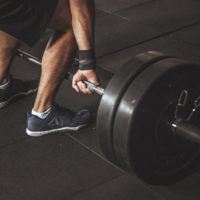There is no ‘one size fits all’ when it comes to strength and conditioning. Hall of Fame Powerlifter Brad Gillingham shares what unique implement you’re missing from your arsenal that can add strength, power, muscle, and grip.
The sledgehammer can be a useful piece of equipment to develop powerful forearm, grip and bicep strength. Increased forearm muscle size is directly related to grip strength.1 Grip strength is an essential performance factor in multiple competitive sports. Controlling your opponent’s wrist with a strong grip provides a huge advantage in wrestling.2 A strong grip can make the difference in catching the game winning touchdown or making a big tackle.3 Sledgehammer work is also a popular exercise for competitive arm wrestlers for working both grip and forearm strength. Grip also comes into play in functional life chores. If you can’t hold onto it; you can’t lift it off of the ground.
During these times of gym closures and limited availability exercise equipment the sledgehammer can be a universal tool. The great thing about a sledgehammer is that you can make it harder by simply increasing the distance your hand is away from the hammer. (Place a piece of tape or draw a line 6-8 inches away from the hammer as a mark to determine distance.) Try this sledgehammer circuit for 3-5 rounds, performing 5-10 repetitions with each arm. Don’t rush out and buy a 20 lb. hammer. Change your leverage to increase the difficulty by moving the grip further away from the hammer. Start out light. A 6-8 lb. hammer would be a better choice. Sledgehammers are inexpensive. You can always add a couple to your arsenal.
Walking the Sledgehammer
Single arm sledgehammer finger walks focus on finger strength and dexterity. They also build massive forearms. This movement is completed my starting at the top of the handle with the hammer on the ground. Grasp the handle with one hand and walk your fingers down the handle by moving the hammer off the ground in a progressive upward movement. This exercise requires coordination of progressive pinching movements involving your fingers and thumb.
Sledgehammer Pronation and Supination
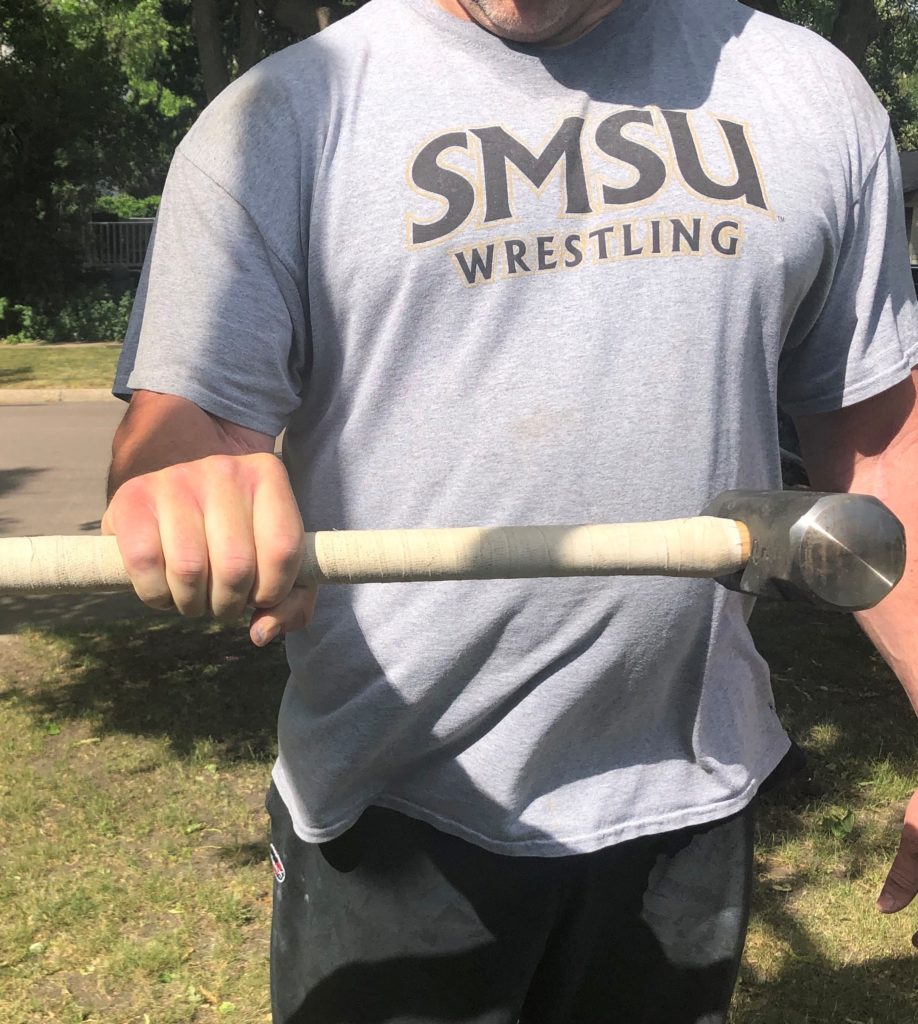
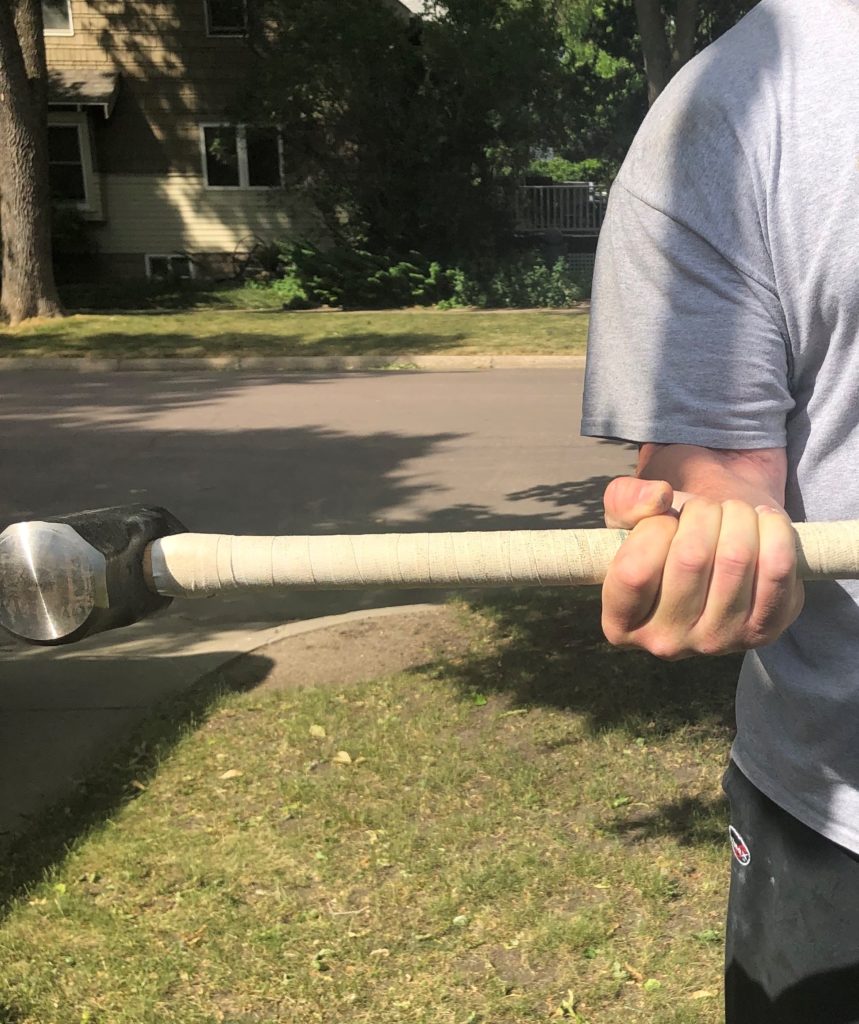
Grasp the hammer in front of your body with the elbow bent at 90 degrees. The sledgehammer should be perpendicular to the ground. Remember to use a mark to determine the distance between your grip and the hammer. The hand starts in a neutral position. The hand is then pronated until the sledgehammer is parallel to the ground, and then supinated back the other direction (passing the neutral hand position) until the sledgehammer is parallel to the ground. This movement will incorporate the biceps and forearms. It is humbling at first. Prepare to choke up on the handle.
Back Sledgehammer Lever
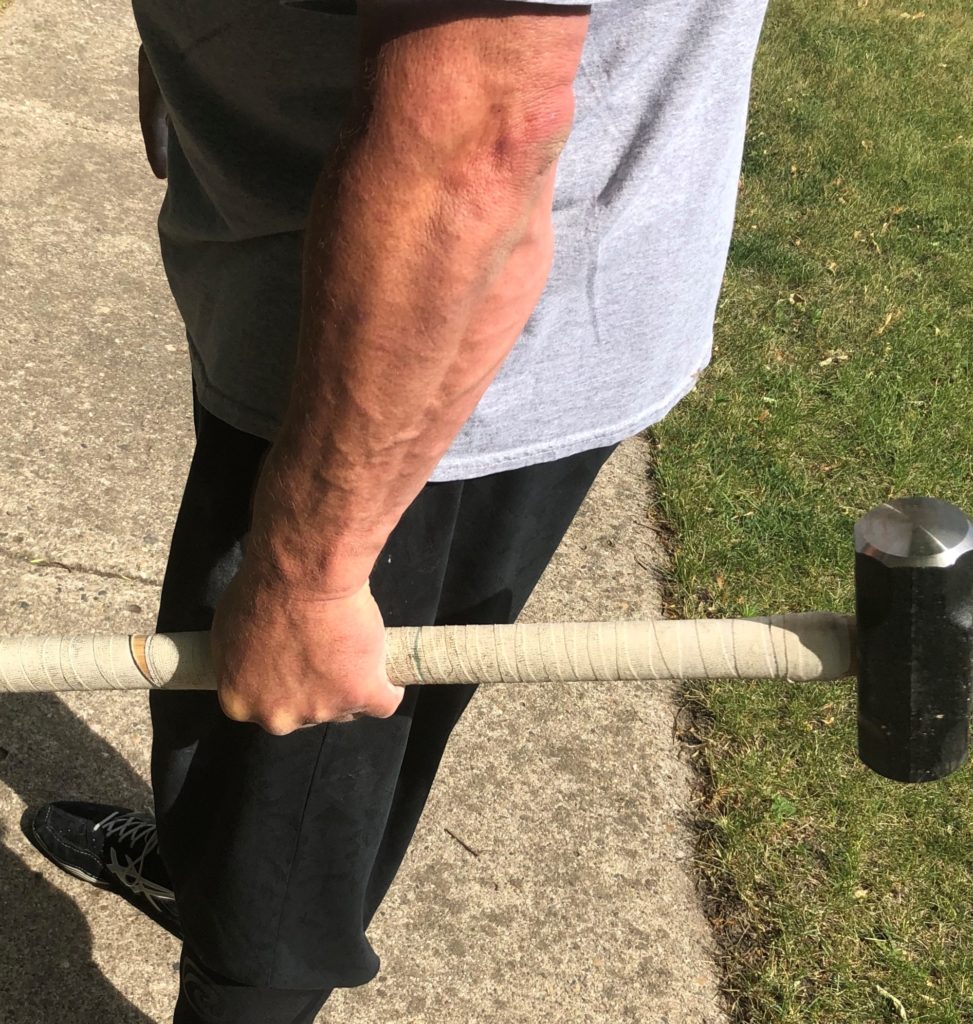
The sledgehammer is parallel to the ground and located at the side with the hammer facing backwards. Your hand is pronated with fingers facing your hip or leg. Take a tight grip on the handle and lever the hammer up and down by using ulnar and radial deviation (flexion).4 The main focus on this exercise is ulnar deviation. Make sure to have a good firm grip on the handle. This will add to the effectiveness of the movement.
Front Sledgehammer Lever
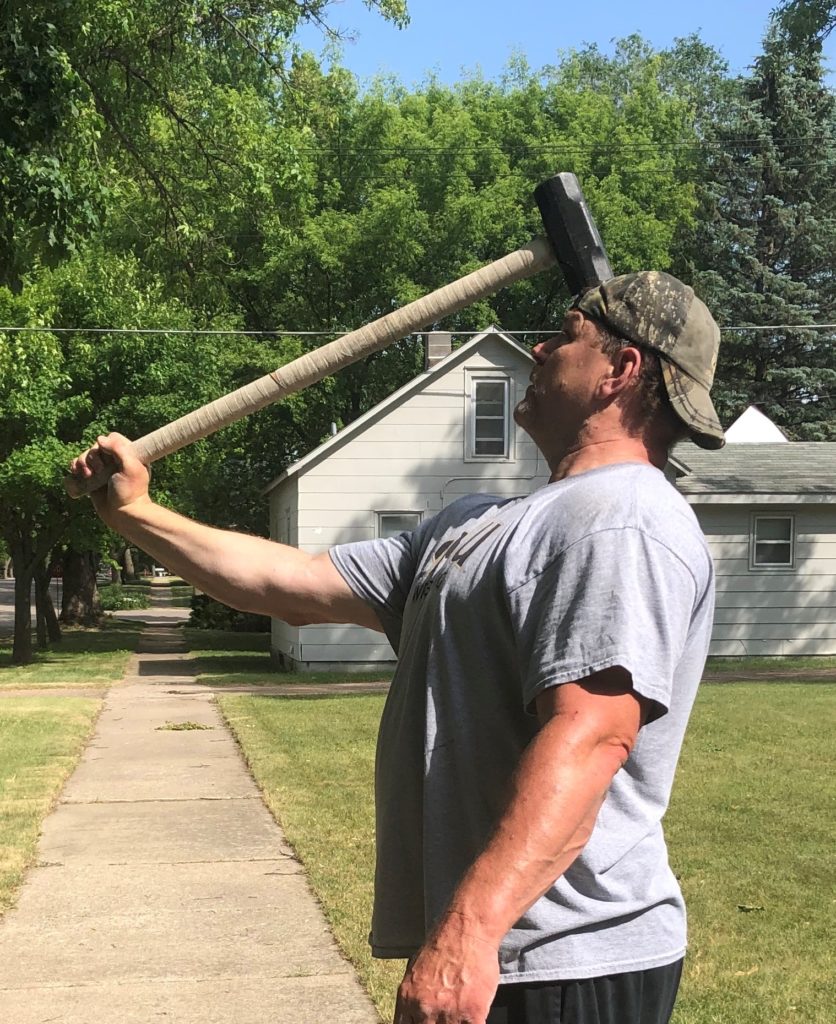
The sledgehammer is grasped in one hand, at the end of the handle, at shoulder height with arm facing straight forward. Make sure to have a good grip on the handle. Traditionally this exercise is performed by levering the hammer under control to the tip of your hat or the forehead using radial deviation (flexion).4 This is a challenging exercise. Caution should be taken to not drop the hammer on your face or head. It may be best to lever the hammer to the side of the head or near the ear.
Brad Gillingham, CSCS | Team myHMB Athlete
References:
- Abe T, Loenneke JP. Handgrip strength dominance is associated with difference in forearm muscle size. Journal of Physical Therapy Science. 2015;27(7):2147-2149. doi:10.1589/jpts.27.2147.
- Stronger Wrestler. (n.d.). Grip Training. Retrieved June 15, 2020, from https://strongerwrestler.com/grip-training/
- Pomazak, R. (2013, February 22). Strengthen Your Grip to Improve Your Football Game. Retrieved June 16, 2020, from https://www.stack.com/a/grip-strength-training-football
- Stride B. (n.d.). Wrist Movements. Retrieved June 15, 2020, from http://www.ergovancouver.net/wrist_movements.htm. Published 2018. Accessed June 15, 2020.


